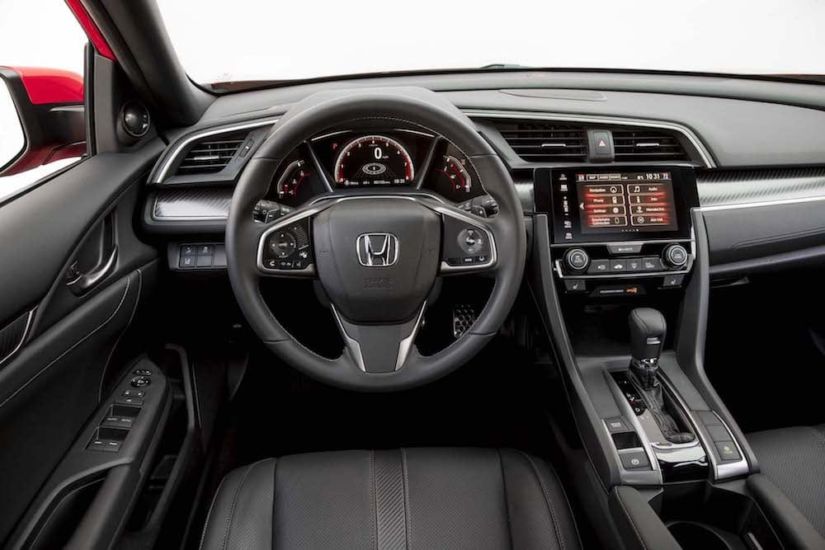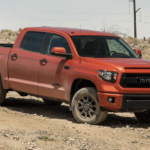At first glance, it almost seems cruel to compare the 2017 Honda Civic to the 2017 Nissan Sentra. One’s been crowned the 2017 Best Buy of the Year Overall Winner by Kelley Blue Book and one, well hasn’t. One boasts a five star safety rating from the National Highway Traffic Safety Administration and is an Insurance Institute for Highway Safety’s Top Safety Pick of 2017. One can’t lay claim to any of those accolades, and we are sure you can bet which one that is.
However, the Nissan Sentra is by no means a bad car, and if you are willing to upgrade some options, or just aren’t concerned with extra features, you may just find that the Sentra is a solid competitor against the best-in-class Civic.
Interior
If you’re looking for a five passenger car, both the Sentra and Civic meet your initial criteria. Additionally, both vehicles are spacious – in fact, the Sentra’s one of the roomiest in its class. Although, which class that falls into is debatable: Nissan considers the Sentra a compact, and the EPA considers it a midsize car. Regardless, the fact that the Sentra offers 37.4 inches of legroom is undeniable and certainly a plus for any rear seat passengers.
The Honda Civic comes in your choice of three body styles and whether you decide to buy a sedan, coupe, or hatchback, you’ll be pretty pleased with the interior space. Backseat passengers will enjoy 36 inches of legroom in the coupe and hatchback, and 37.5 inches in the sedan. Pretty much on par with the Sentra, cabin space is not what sets these two cars apart.
And neither is cargo room: the Sentra has 15.1 cubic feet of trunk space and so does the Civic sedan. The Civic coupe only offers 12.1 cubic feet of cargo room, so if trunk space is really important to you, you’re going to want to explore the Civic hatchback with its 25.7 cubic feet of space.
So does anything set the Civic and Sentra apart as far interiors go? Yup – features. The base model Sentra comes with a four-speaker audio system, Bluetooth capability, and a USB port, while the base model Civic comes with Bluetooth, a USB port, automatic climate control, a 5-inch LCD display screen and a rearview camera. Of course there are additional options and as you move up the trim levels (both the Sentra and the Civic offer five trim levels; the Civic hatchback comes with two additional trim choices), but for base model features, you’re better off in a Civic.
Performance
If you’ve got places to be, you’re going to get there faster in a Civic – unless you opt for Nissan’s SR Turbo engine, which is new for 2017. With a Civic, base models, lower trims, and coupes are powered by a 2.0-liter four-cylinder engine cranking out 158 horsepower. Move up the models or get a hatchback, and you’re getting a 1.5 liter turbocharged engine that’s generating 174 horsepower. Standard on Sentra is the 1.8-liter four-cylinder that drives out at 130 horsepower. Opt for the SR Turbo and you’re going to upgrading to a 1.6-liter four-cylinder with 188 horsepower. So once again, the Sentra can get on par with (or exceed) the Civic’s capability – you’ll just end up paying more for it.
The EPA estimates that the Civic will get between 28-32 mpg in the city and 36-42 mpg on the highway (depending on if you opt for special engine features, CVT, etc). The Sentra is estimated to get between 25-29 mpg in the city, 30-37 mpg on the highway (same caveat applies). So hands down, if you’re looking for fuel efficiency, you’ll be better off in a Civic… although not by all that much.
Save with the Sentra
Ultimately, the Civic reigns supreme due to just that little bit of extra everything. However, the Sentra has the Civic beat on price – a base model Sentra’s starting MSRP is $16,990, while a base model Civic is $18,740. So if you aren’t concerned with the extra bells and whistles that an additional $1760 will get you, than the Sentra may be just what you’re looking for, after all.



